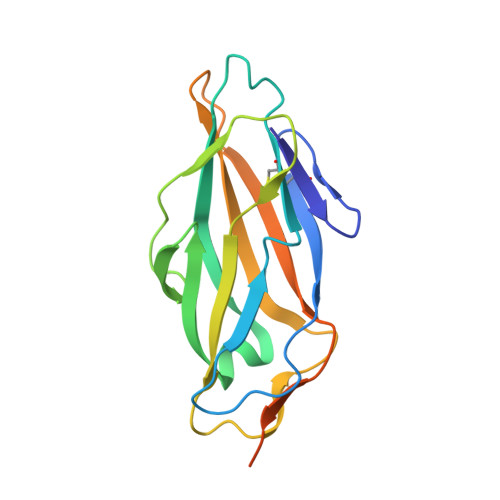Structure-based drug design and optimization of mannoside bacterial FimH antagonists.
Han, Z., Pinkner, J.S., Ford, B., Obermann, R., Nolan, W., Wildman, S.A., Hobbs, D., Ellenberger, T., Cusumano, C.K., Hultgren, S.J., Janetka, J.W.(2010) J Med Chem 53: 4779-4792
- PubMed: 20507142
- DOI: https://doi.org/10.1021/jm100438s
- Primary Citation of Related Structures:
3MCY - PubMed Abstract:
FimH-mediated cellular adhesion to mannosylated proteins is critical in the ability of uropathogenic E. coli (UPEC) to colonize and invade the bladder epithelium during urinary tract infection. We describe the discovery and optimization of potent small-molecule FimH bacterial adhesion antagonists based on alpha-d-mannose 1-position anomeric glycosides using X-ray structure-guided drug design. Optimized biarylmannosides display low nanomolar binding affinity for FimH in a fluorescence polarization assay and submicromolar cellular activity in a hemagglutination (HA) functional cell assay of bacterial adhesion. X-ray crystallography demonstrates that the biphenyl moiety makes several key interactions with the outer surface of FimH including pi-pi interactions with Tyr-48 and an H-bonding electrostatic interaction with the Arg-98/Glu-50 salt bridge. Dimeric analogues linked through the biaryl ring show an impressive 8-fold increase in potency relative to monomeric matched pairs and represent the most potent FimH antagonists identified to date. The FimH antagonists described herein hold great potential for development as novel therapeutics for the effective treatment of urinary tract infections.
Organizational Affiliation:
Department of Biochemistry and Molecular Biophysics, Washington University School of Medicine, 660 S. Euclid Avenue, St. Louis, Missouri 63110, USA.


















